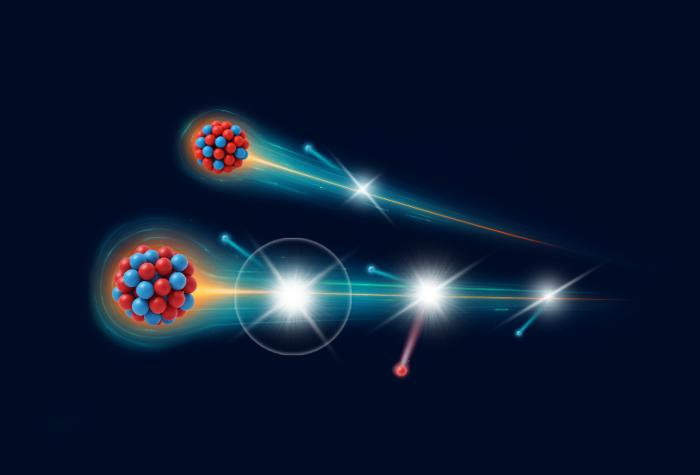Researchers at Beihang University and the Institute of Modern Physics of the Chinese Academy of Science have developed a unique technique for increasing the production of unusual nuclei near the neutron drip line. The study was published in the journal Nuclear Science and Techniques.

The projectiles generate the extremely neutron-rich fragments through either single-step or multi-step reaction, with the latter involving one or more intermediate nuclei. Image Credit: Bao-Hua Sun
This technique uses multi-step fragmentation of high-energy beams (~1 GeV/nucleon) in thick targets (~3 mean free path) to produce neutron-rich fragments more efficiently. Unlike typical single-step fragmentation, it increases the yields of highly neutron-rich residues by many orders of magnitude, overcoming the inherent constraints imposed by low cross sections.
Validating Multi-Step Fragmentation in Realistic Scenarios
Thick-target reactions inevitably increase a beam’s transverse emittance and momentum spread, primarily due to the cumulative effects of scattering and fragmentation. The transmission efficiency of the fragments was the subject of simulations conducted by researchers utilizing the planned HIRIBL beamline at China's HIAF facility, which is now undergoing commissioning to measure this impact.
The results show that multi-step fragmentation still works significantly better than single-step techniques, even with wider momentum distributions. This enhances the production of neutron-rich isotopes enough to open access to previously unexplored regions of the nuclear chart.
Scientific Implications and Future Applications
This framework goes beyond traditional fragmentation approaches by including complementary reactions, such as projectile fission combined with fragmentation, to maximize isotope production. These modular techniques offer unparalleled flexibility for reaching drip-line nuclei and studying their unusual structures.
Critically, access to these isotopes offers significant improvements in nuclear astrophysics, including explaining the composition of neutron star crusts and improving models of r-process nucleosynthesis, the cosmic mechanism that produces heavy metals such as gold and uranium.
Journal Reference:
Wei, X.-L., et al. (2025) Searching for nuclei on the edge of stability with multi-step fragmentation. Nuclear Science and Techniques. doi.org/10.57760/sciencedb.j00186.00751.